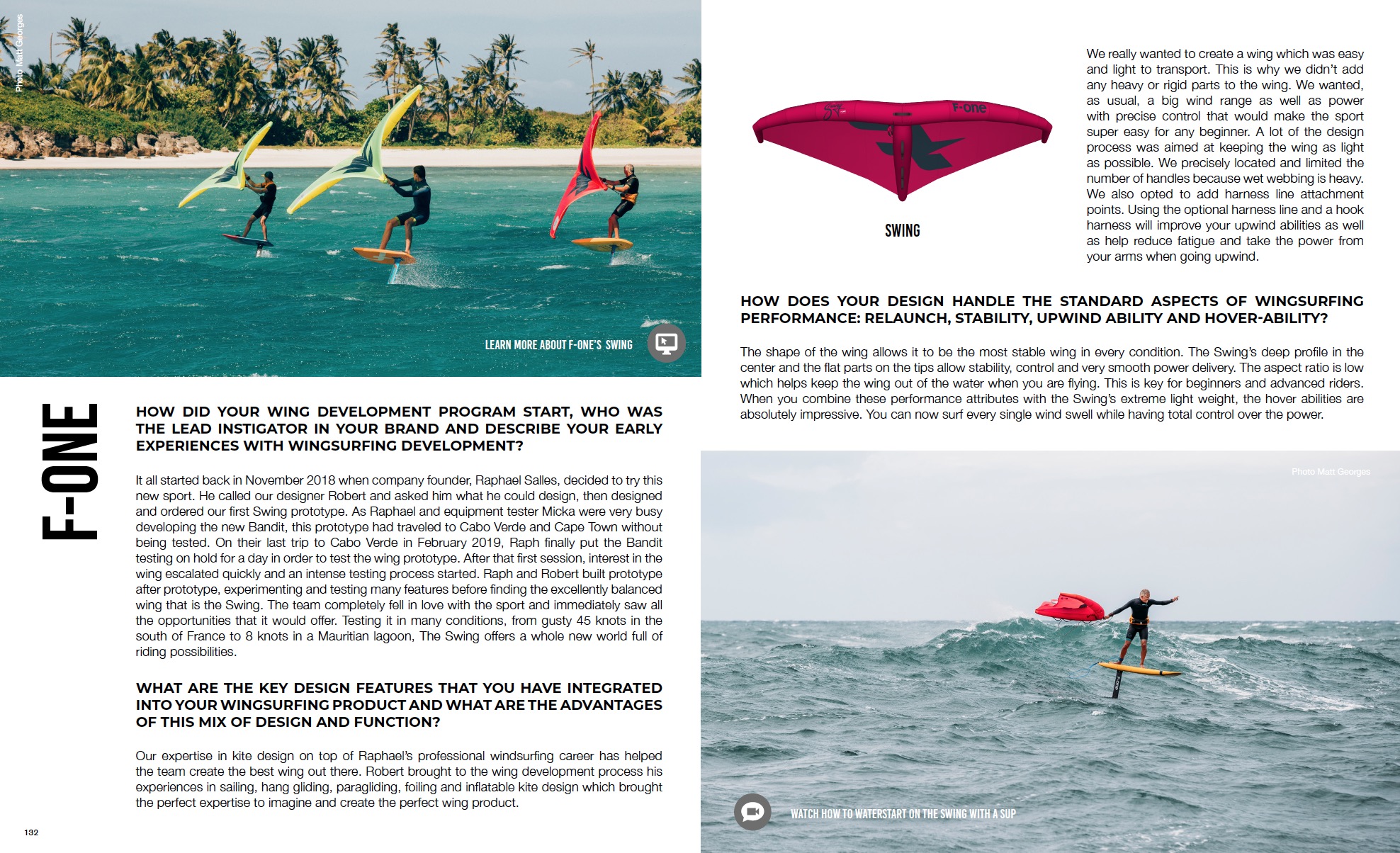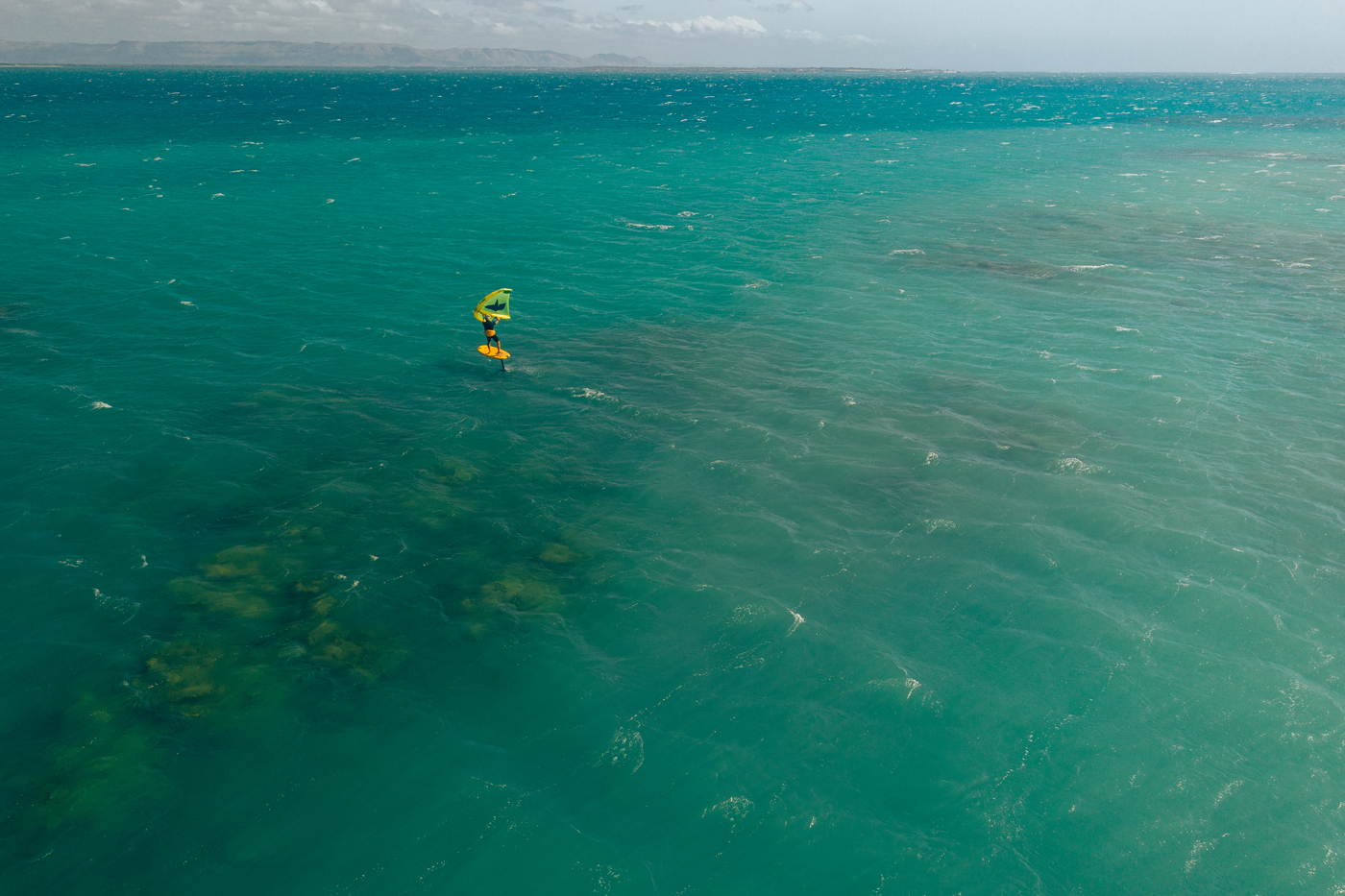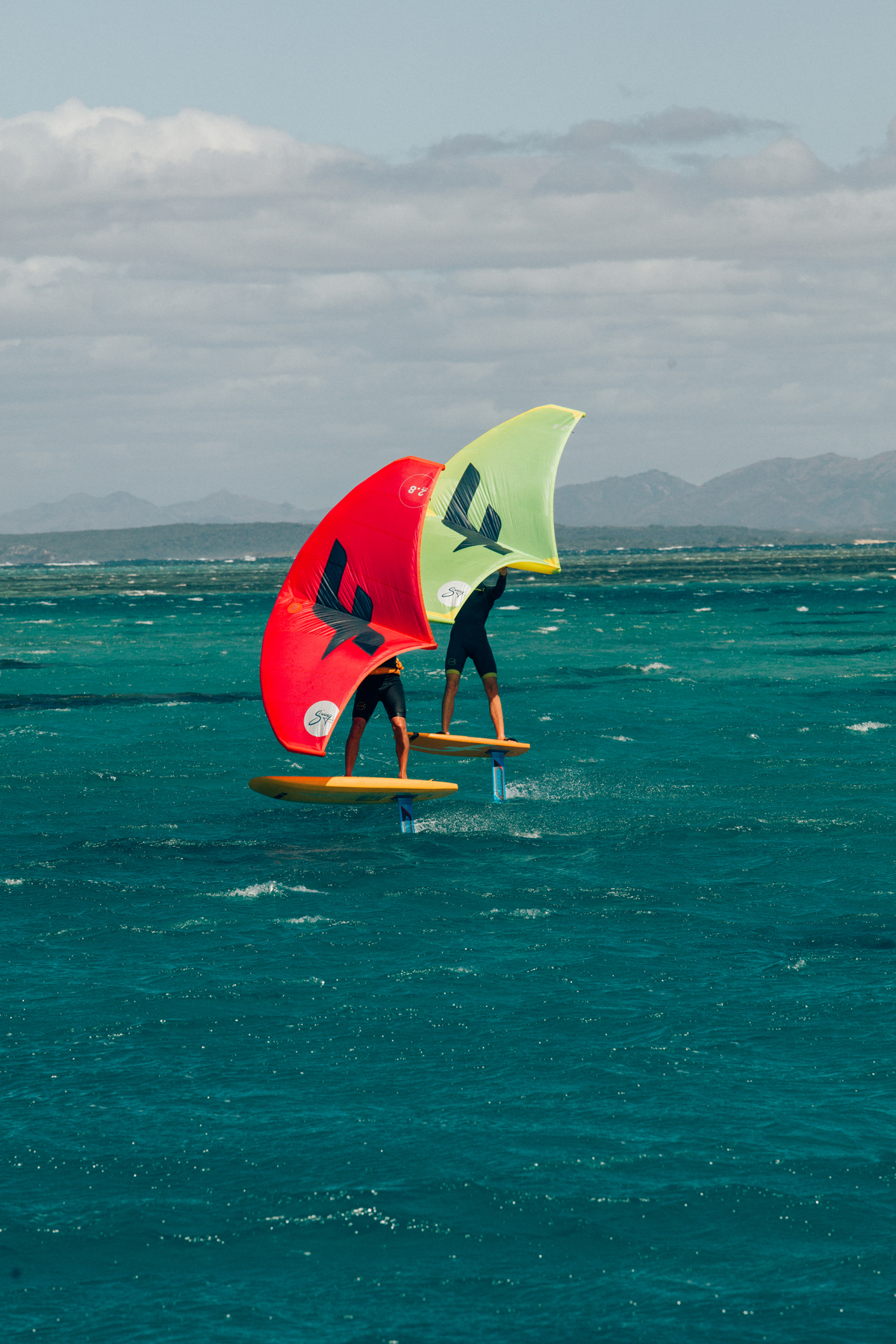 HOW DID YOUR WING DEVELOPMENT PROGRAM START, WHO WASÂ THE LEAD INSTIGATOR IN YOUR BRAND AND DESCRIBE YOUR EARLYÂ EXPERIENCES WITH WINGSURFING DEVELOPMENT?
HOW DID YOUR WING DEVELOPMENT PROGRAM START, WHO WASÂ THE LEAD INSTIGATOR IN YOUR BRAND AND DESCRIBE YOUR EARLYÂ EXPERIENCES WITH WINGSURFING DEVELOPMENT?
It all started back in November 2018 when company founder, Raphael Salles, decided to try this new sport. He called our designer Robert and asked him what he could design, then designed and ordered our first Swing prototype. As Raphael and equipment tester Micka were very busy developing the new Bandit, this prototype had traveled to Cabo Verde and Cape Town without being tested. On their last trip to Cabo Verde in February 2019, Raph finally put the Bandit testing on hold for a day in order to test the wing prototype. After that first session, interest in the wing escalated quickly and an intense testing process started. Raph and Robert built prototype after prototype, experimenting and testing many features before finding the excellently balanced wing that is the Swing. The team completely fell in love with the sport and immediately saw all the opportunities that it would offer. Testing it in many conditions, from gusty 45 knots in the south of France to 8 knots in a Mauritian lagoon, The Swing offers a whole new world full of riding possibilities.

Photo: Ydwer van der Heide
WHAT ARE THE KEY DESIGN FEATURES THAT YOU HAVE INTEGRATEDÂ INTO YOUR WINGSURFING PRODUCT AND WHAT ARE THE ADVANTAGESÂ OF THIS MIX OF DESIGN AND FUNCTION?
Our expertise in kite design on top of Raphael’s professional windsurfing career has helped the team create the best wing out there. Robert brought to the wing development process his experiences in sailing, hang gliding, paragliding, foiling and inflatable kite design which brought the perfect expertise to imagine and create the perfect wing product.
We really wanted to create a wing which was easy and light to transport. This is why we didn’t add any heavy or rigid parts to the wing. We wanted, as usual, a big wind range as well as power with precise control that would make the sport super easy for any beginner. A lot of the design process was aimed at keeping the wing as light as possible. We precisely located and limited the number of handles because wet webbing is heavy. We also opted to add harness line attachment points. Using the optional harness line and a hook harness will improve your upwind abilities as well as help reduce fatigue and take the power from your arms when going upwind.
HOW DOES YOUR DESIGN HANDLE THE STANDARD ASPECTS OF WINGSURFINGÂ PERFORMANCE: RELAUNCH, STABILITY, UPWIND ABILITY AND HOVER-ABILITY?
The shape of the wing allows it to be the most stable wing in every condition. The Swing’s deep profile in the center and the flat parts on the tips allow stability, control and very smooth power delivery. The aspect ratio is low which helps keep the wing out of the water when you are flying. This is key for beginners and advanced riders. When you combine these performance attributes with the Swing’s extreme light weight, the hover abilities are absolutely impressive. You can now surf every single wind swell while having total control over the power.
 WHAT APPROACH HAVE YOU TAKEN TO WING SIZING, AND HOW DO YOU RECOMMENDÂ THE VARIOUS SIZED WINGS TO YOUR POTENTIAL BUYERS?
WHAT APPROACH HAVE YOU TAKEN TO WING SIZING, AND HOW DO YOU RECOMMENDÂ THE VARIOUS SIZED WINGS TO YOUR POTENTIAL BUYERS?
We first started with a 2.8m as we believed that we would be riding in the high wind range. But as we tested we discovered the need for wings in the lower end of the wind range and the fantastic feeling that it offered. With 5m and 6m Swings mated with a big foil on your board, you can start riding in 10 knots. Riding in 45 knots has now become very enjoyable with the 2.8m wings. If riders want to ride in 15-20 knots then they can choose the 3.5m or 4.2 according to their board and foil sizes. The most incredible aspect of these wings is that you can cover 30 knots of wind with only two Swing products.
HOW DOES THE WING INTERMIX WITH YOUR CURRENT OFFERING OF FOIL WINGÂ AND FOILBOARD DESIGNS AND WHAT WILL BE YOUR FUTURE APPROACH TO BOARDÂ SIZING, VOLUME AND FEATURES?
We quickly realized that you need a specific board for this discipline. We at first only had our surf foil and SUP foil boards but there was a gap in between. You don’t need as much volume as a SUP and the volume of the surfboards is too small to really enjoy the sport to the fullest. As a result, we have developed a full range of Rocket Wing boards to fill that gap from 50 to 90 liters, which offer the most comfortable ride. The length of the wing boards is shorter than what you need for SUP yet they give you the volume you need for an easy waterstart.
Watch F-One’s 2020 Swing interview from AWSI
